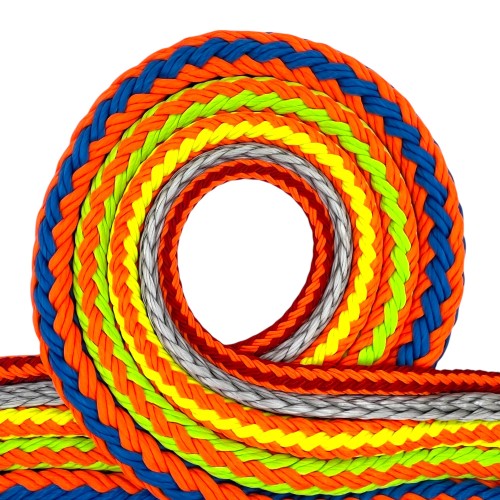Sorry for the inconvenience.
Search again what you are looking for

Hollow braid ropes are a vital component in an arborist's toolkit, prized for their lightweight and flexible design. These ropes are crafted from a unique, hollow weave that allows for easy splicing, making them highly adaptable for various arboricultural tasks. Arborists commonly use hollow braid ropes for creating slings, speed lines, and utility lines, all of which require quick adjustments and secure fastenings. Their exceptional strength-to-weight ratio makes them ideal for applications where maneuverability and minimal weight are critical, enhancing both safety and efficiency in tree care operations.
Search again what you are looking for
Hollow braided ropes are particularly popular in arboriculture for their unique characteristics and versatility. Here's an overview of their special features and advice on choosing the ropes best suited to your needs.
As their name suggests, these ropes are made from a hollow braid without a central core. This structure allows them to remain light yet strong enough to withstand heavy loads.
One of the main features of these ropes is that they are easy to splice, allowing users to quickly create loops, slings or incorporate accessories without significantly reducing the strength of the rope.
They are often made from polypropylene, nylon, polyester, HMPE or Dyneema, each offering specific advantages in terms of strength, weight, UV resistance and abrasion resistance.
These ropes offer an excellent strength-to-weight ratio, which is crucial for arboricultural tasks where handling equipment can be physically demanding.
The flexibility of these ropes makes them ideal for throwing and handling in complex configurations, such as speed line installations or when using slings.
Clearly identify the applications in which the rope will be used. Some hollow braided ropes are better suited to dynamic loads, while others are better for static loads.
Evaluate the properties of each material. For example, Dyneema is extremely abrasion-resistant and lightweight but can be more expensive, while polyester offers good UV resistance and is more economical.
For frequent outdoor use, favour materials with good UV and abrasion resistance to extend the rope's lifespan.
Make sure the diameter of the rope is suitable for the intended application and the equipment it will be used with.
By taking these specifics and tips into account, you can choose a hollow-braided rope that will not only improve the safety and efficiency of your arboricultural operations, but will also be a durable and versatile investment in your professional equipment.
check_circle
check_circle